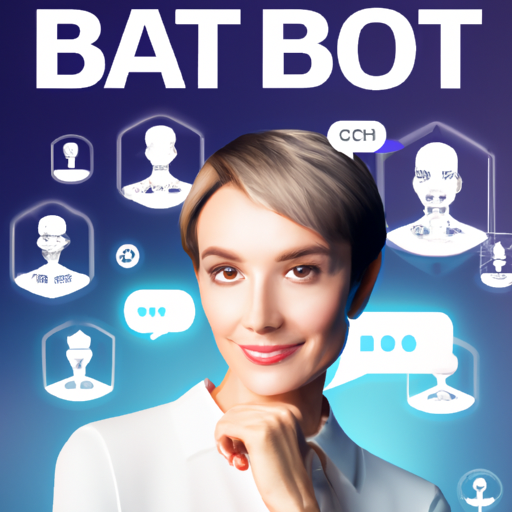Mastering GPT Chatbots: Unleashing the Potential of Conversational AI for Enhanced Customer Experience and Beyond
GPT-powered chatbots revolutionize industries like customer service, healthcare, and education by providing human-like conversations, improving response times, and understanding linguistic nuances. These chatbots enhance user experiences, streamline processes, and drive growth. GPT chat prompts enable personalized interactions, better natural language processing, and improved support. As AI technology advances, GPT chatbots have the potential to transform various sectors, but challenges like data privacy and ethical concerns must be addressed.
In today’s fast-paced digital world, the demand for instant and efficient communication is higher than ever. As businesses strive to meet these expectations, the role of chatbots powered by advanced AI technologies like Generative Pre-trained Transformers (GPT) has become increasingly significant. These GPT-powered chatbots not only elevate customer experience but also revolutionize the way businesses interact with their clients. In this comprehensive article, we will delve into the world of chat GPT prompts, exploring their potential to transform various aspects of your business, from customer service to sales and marketing. We will also discuss how to create effective prompts that enhance user experience, and examine the ethical considerations surrounding their use. Finally, we will showcase real-life success stories of GPT-powered chatbots and their potential impact on the future of conversational AI. So, buckle up and join us on this exciting journey to uncover the best chat GPT prompts and their limitless possibilities.
- 1. Introduction to GPT-Powered Chatbots
- 2. Top Chat GPT Prompts for Customer Service
- 3. Enhancing User Experience with GPT Chat Prompts
- 4. The Role of GPT in Revolutionizing Online Communication
- 5. How to Create Effective Chat GPT Prompts
- 6. GPT-Powered Chatbots for Sales and Marketing
- 7. The Future of Conversational AI: GPT Chatbots
- 8. Personalizing User Interactions with GPT Chat Prompts
- 9. Improving Customer Retention through GPT Chatbots
- 10. AI Ethics and GPT Chatbots: Ensuring Responsible Use
- 11. Natural Language Processing and GPT Chat Prompts
- 12. GPT Chatbots for Mental Health and Emotional Support
- 13. The Science Behind GPT-Powered Chatbots
- 14. Best Practices for Implementing GPT Chatbots in Your Business
- 15. GPT Chatbots in Education: Promoting Interactive Learning
- 16. The Impact of GPT Chatbots on Customer Satisfaction
- 17. Real-Life Success Stories of GPT-Powered Chatbots
- 18. Leveraging GPT Chatbots for Social Media Engagement
- 19. Multilingual GPT Chatbots: Bridging Language Barriers
- 20. Conclusion: The Future of Chat GPT Prompts and Their Potential Impact
1. Introduction to GPT-Powered Chatbots

GPT-powered chatbots have emerged as a revolutionary development in the field of artificial intelligence and natural language processing. These chatbots leverage the capabilities of Generative Pre-trained Transformers (GPT) to deliver human-like conversations and meaningful interactions with users. The underlying technology behind these chatbots involves a deep learning model that has been pre-trained on large amounts of text data, enabling it to understand and generate contextually relevant responses.
The advent of GPT-powered chatbots has transformed various industries, including customer service, healthcare, education, and e-commerce, by offering efficient and personalized solutions. These chatbots have significantly reduced the response time and improved the overall user experience by providing instant, accurate, and context-aware answers to users’ queries.
One of the most notable aspects of GPT-powered chatbots is their ability to grasp the nuances of human language, such as slang, idioms, and colloquial expressions. This has made interactions with these chatbots feel more natural and engaging, making them a preferred choice for many businesses and organizations worldwide. Additionally, GPT-powered chatbots can be easily integrated with existing platforms, making them a versatile and cost-effective solution for a wide range of applications.
In summary, GPT-powered chatbots have opened up new possibilities in the realm of conversational AI by providing human-like interactions and helping businesses streamline their processes, enhance customer engagement, and drive growth. As the technology continues to advance, we can expect even more sophisticated and versatile chatbot solutions that will reshape the way we communicate and interact with machines.
2. Top Chat GPT Prompts for Customer Service
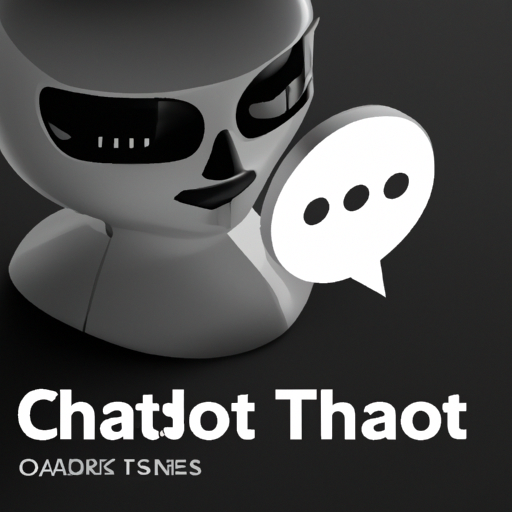
Top Chat GPT Prompts for Customer Service
In today’s fast-paced digital world, businesses are increasingly relying on chatbots and AI-powered customer service platforms to handle customer inquiries and provide assistance. With the help of GPT-3 technology, customer service chatbots can now understand and respond to a wide range of prompts. Here’s a list of top chat GPT prompts for customer service that can help businesses deliver an efficient and improved customer experience:
1. Order Status Inquiries: One of the most common customer service inquiries relates to order status. GPT prompts can be designed to handle questions such as "Where is my order?" or "What’s the status of my order?"
2. Billing and Payment Queries: Customers often have questions related to billing and payments. GPT chatbots can assist by providing information about payment methods, processing refunds, or clarifying charges on a bill.
3. Product Information: Product-related questions are a staple in customer service. GPT prompts can be used to answer questions about product features, usage, and compatibility.
4. Technical Support: Technical issues are a common source of frustration for customers. GPT-powered chatbots can provide assistance with troubleshooting, software updates, and device compatibility.
5. Return and Exchange Policies: Customers frequently have questions about return and exchange policies. GPT prompts can be designed to provide information on how to initiate a return, the status of a return, or the eligibility of a product for exchange.
6. Shipping Information: Shipping-related questions are another common customer service topic. GPT-powered chatbots can provide estimated delivery dates, shipping costs, and courier information.
7. Account Management: Customers may need assistance with managing their accounts, such as updating personal information or resetting passwords. GPT prompts can help guide users through these processes.
8. Promotions and Discounts: Inquiries about special offers, discounts, and promotional codes can be handled efficiently by GPT chatbots, ensuring customers have the information they need to make informed purchases.
9. Appointment Scheduling and Rescheduling: For businesses that require appointments, GPT chatbots can help customers schedule, reschedule, or cancel appointments with ease.
10. Feedback and Complaints: GPT chatbots can be programmed to handle customer feedback and complaints, ensuring that customers feel heard and their concerns are addressed promptly.
By utilizing GPT prompts for customer service, businesses can streamline their customer support processes and provide a more efficient and satisfying experience for their customers. As AI technology continues to advance, the potential for even more sophisticated and intuitive chatbot solutions will only grow, further revolutionizing the world of customer service.
3. Enhancing User Experience with GPT Chat Prompts
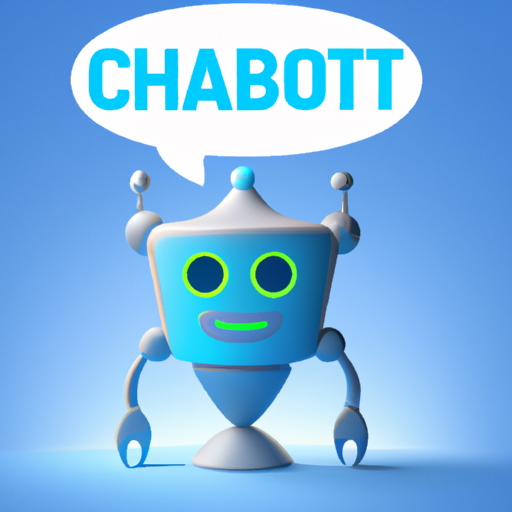
Enhancing User Experience with GPT Chat Prompts
The ultimate goal of incorporating a chatbot into any digital platform is to improve user experience. This can be achieved by employing GPT (Generative Pre-trained Transformer) chat prompts that enable the chatbot to engage in more meaningful, natural, and helpful conversations with users. Here are some ways in which GPT chat prompts can enhance the user experience:
1. Personalized Interaction: GPT chat prompts enable chatbots to tailor their responses based on the user’s input, providing a more personalized experience. This not only makes interactions feel more human-like, but it also helps users feel valued, leading to higher satisfaction levels. By understanding and remembering user preferences, chatbots can make more relevant suggestions, offer personalized support, and build a better rapport with users.
2. Contextual Understanding: One of the primary advantages of GPT chat prompts is their ability to comprehend the context of a conversation. This helps the chatbot respond more accurately and naturally to user queries. Through an advanced understanding of context, the chatbot can also anticipate user needs, provide relevant information, and guide users through processes more effectively. This leads to a more seamless user experience, reducing frustration and increasing user satisfaction.
3. Multi-turn Conversations: GPT chat prompts facilitate smooth multi-turn conversations, allowing chatbots to engage users in more complex and meaningful dialogues. This is particularly useful when users need assistance with more involved tasks, such as troubleshooting an issue or making a reservation. By maintaining the context of the conversation, GPT chat prompts help chatbots provide comprehensive support and ensure that users receive the assistance they require.
4. Improved Help and Support: With GPT chat prompts, chatbots can better understand user queries and provide more accurate solutions. This reduces the need for users to repeatedly explain their issues and makes it easier for them to find the help they need. Additionally, GPT chat prompts can help chatbots identify when the user’s query is beyond their capabilities, allowing them to escalate the issue to a human agent more efficiently.
5. Natural Language Processing: GPT chat prompts leverage natural language processing (NLP) to understand user input better, even when it’s phrased in colloquial or informal language. This allows users to communicate with chatbots in a more natural and comfortable manner, as they would with another human. By understanding and responding to user input more effectively, GPT chat prompts contribute to a more enjoyable and efficient user experience.
In conclusion, GPT chat prompts play a significant role in enhancing user experience by providing personalized and contextual interactions, facilitating multi-turn conversations, improving help and support, and enabling better natural language processing. As chatbots continue to evolve, the incorporation of GPT chat prompts will be essential in providing users with more engaging, intuitive, and satisfying interactions.
4. The Role of GPT in Revolutionizing Online Communication
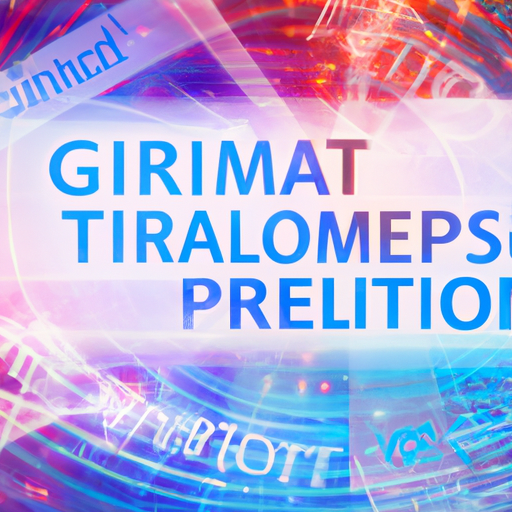
The advent of Generative Pre-trained Transformers (GPTs) has brought about a significant shift in the landscape of online communication. GPTs, with their advanced natural language processing capabilities, have transformed the way we interact with machines and have opened up new avenues for seamless and engaging communication. In this section, we will explore the role of GPT in revolutionizing online communication and its potential implications.
1. Personalized Interactions: GPTs have the ability to understand and process natural language in a human-like manner, making them capable of providing personalized interactions based on the user’s context, emotions, and preferences. This level of personalization improves user engagement and satisfaction, making chatbots and virtual assistants more helpful and efficient.
2. Enhanced Customer Support: GPT-powered chatbots have transformed the realm of customer support, enabling businesses to provide quick and accurate responses to customer queries. This not only reduces the response time but also significantly improves the customer experience. GPTs can be trained to handle multiple languages and jargon, making them an invaluable asset in a global business environment.
3. Improved Content Generation: GPTs can be utilized to generate contextually relevant and engaging content for various online platforms such as blogs, social media, and e-commerce websites. By automatically generating content based on user preferences and interests, GPTs can help businesses save time and resources while ensuring consistency in communication.
4. Real-time Translation: GPTs can be employed for real-time translation of text and speech, breaking language barriers in online communication. This capability has the potential to foster global collaboration and understanding by enabling people from diverse linguistic backgrounds to communicate effortlessly.
5. Enhanced Accessibility: GPTs can be leveraged to create more accessible web content for people with disabilities. For instance, they can be used to generate image captions and descriptive text for visually impaired users, making the internet a more inclusive space.
6. Smart Filtering and Moderation: GPTs can be employed to filter and moderate online content by detecting and removing inappropriate or harmful content such as spam, offensive language, or misinformation. This ensures a safe and healthy online environment for users and protects the reputation of businesses and platforms.
7. Training and Education: GPTs can revolutionize the way we learn and train by providing personalized and interactive learning experiences. They can be used to create virtual tutors that adapt to a student’s learning style, pace, and interests, making education more engaging and effective.
In conclusion, GPTs are playing a pivotal role in revolutionizing online communication by providing personalized, efficient, and accessible solutions that cater to the diverse needs of users and businesses. As GPT technology continues to advance, we can expect to see even more innovative applications that will further enhance our digital interactions and reshape the way we communicate online.
5. How to Create Effective Chat GPT Prompts
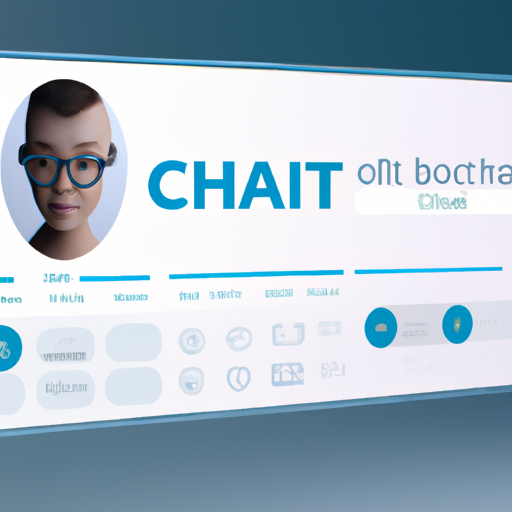
Creating effective Chat GPT prompts is essential for obtaining accurate, relevant, and engaging responses from AI language models. By carefully crafting your prompts, you’ll be able to generate more meaningful interactions and enhance user experience. Here are five tips to help you create effective Chat GPT prompts:
1. Be clear and concise: Make sure your prompt is straightforward and easy to understand. Avoid using ambiguous or vague language, as this could lead to confusing or irrelevant responses from the AI. Instead, use clear and concise language to convey your intended meaning. This will help the AI understand your context better and generate a more accurate response.
2. Provide context: Giving context in your prompt can be incredibly helpful in generating more accurate and relevant responses. If you’re discussing a specific topic or issue, provide some background information or mention the important details relevant to the subject. This will help the AI understand the context better and generate more appropriate replies.
3. Use specific keywords: Including relevant keywords in your prompt can help guide the AI towards generating a response that aligns with your desired topic. For example, if you’re seeking advice on time management, include keywords like "time management," "productivity," and "prioritization." This will help the AI understand the focus of the prompt and generate a more targeted response.
4. Ask open-ended questions: Encouraging open-ended responses can lead to more engaging and informative conversations. Instead of asking yes or no questions, try to ask questions that require more detailed explanations or opinions. This will prompt the AI to generate more elaborate responses, allowing for a deeper understanding of the subject matter.
5. Experiment and iterate: Creating effective Chat GPT prompts is often a process of trial and error. It’s essential to experiment with different phrasings, keywords, and question types to find what works best for your specific needs. Don’t be afraid to tweak your prompts and iterate based on the AI’s responses. This will help you refine your prompts over time and create more engaging and accurate conversations.
6. GPT-Powered Chatbots for Sales and Marketing
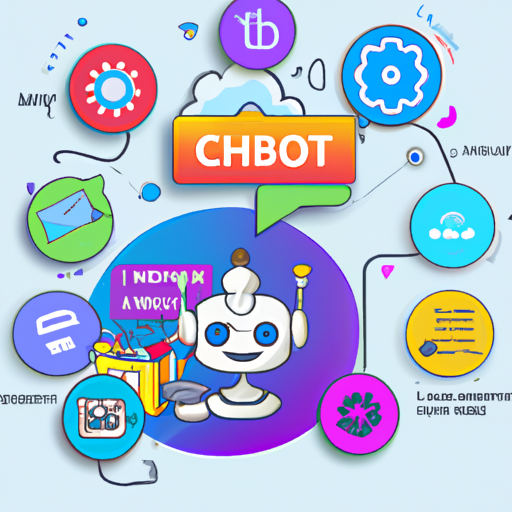
GPT-Powered Chatbots for Sales and Marketing
In the ever-evolving world of sales and marketing, businesses are constantly on the lookout for innovative tools to enhance customer experience and drive sales. One such technology that has been making waves in recent years is the GPT-powered chatbot. By leveraging the power of advanced natural language processing (NLP) and generative pre-trained transformers (GPT), these chatbots have become a game-changer for businesses aiming to improve their sales and marketing efforts.
Here are some ways GPT-powered chatbots can be utilized in sales and marketing:
1. Personalized communication: GPT-powered chatbots are designed to understand context and respond to user queries in a more human-like manner. This allows businesses to provide personalized communication to customers, which can lead to better engagement and higher conversion rates.
2. Lead generation: By implementing a GPT-powered chatbot on a company’s website or social media platforms, businesses can engage with potential customers and gather essential information for lead generation. These chatbots can ask relevant questions, qualify leads based on provided data, and direct them to the appropriate sales team.
3. Sales support: GPT-powered chatbots can assist sales teams by providing instant answers to common customer questions or concerns. This not only saves time for sales representatives but also ensures that customers receive accurate and timely information, leading to a smoother sales process and higher customer satisfaction.
4. Customer segmentation: These advanced chatbots can analyze user responses and segment customers based on their preferences, needs, and behaviors. This data can be invaluable for marketing teams, enabling them to create targeted and effective marketing campaigns.
5. Upselling and cross-selling: GPT-powered chatbots can identify opportunities for upselling and cross-selling by understanding customer needs and suggesting relevant products or services. This can lead to increased revenue without putting additional pressure on sales teams.
6. After-sales support: GPT-powered chatbots can also be utilized for after-sales support, addressing customer queries or concerns, and providing swift resolutions. This not only helps in achieving higher customer satisfaction but also reduces the workload on customer support teams.
7. Analyzing customer feedback: By engaging with customers and collecting their feedback, GPT-powered chatbots can provide insights into customer preferences and areas of improvement. This data can be crucial for businesses to refine their strategies and make data-driven decisions.
In conclusion, GPT-powered chatbots offer immense potential for sales and marketing teams by providing personalized communication, streamlining lead generation, and improving customer support. By harnessing the power of this technology, businesses can enhance their customer experience and gain a competitive edge in the market.
7. The Future of Conversational AI: GPT Chatbots
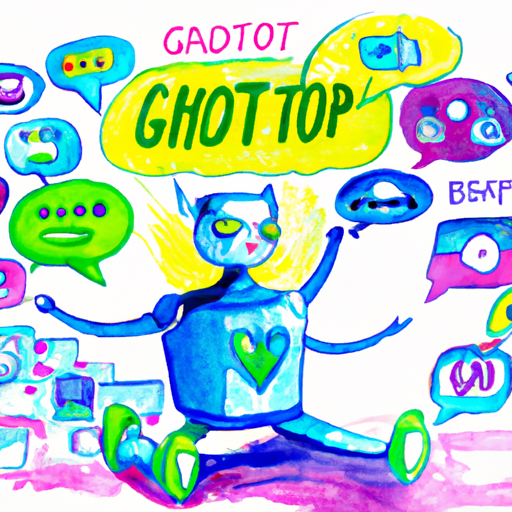
The future of conversational AI is looking brighter than ever with the rapid advancements in GPT chatbots. As this technology continues to evolve, we can expect a significant transformation in the way humans interact with machines. GPT chatbots, powered by sophisticated language models like OpenAI’s GPT-3, have shown impressive capabilities in understanding context, generating human-like responses, and offering valuable insights.
One of the most promising aspects of GPT chatbots is their ability to improve customer experiences across various industries. Businesses can leverage these chatbots to provide instant support, resolve issues, and answer queries with ease. This will not only save time and resources but also lead to higher customer satisfaction rates.
In the realm of education, GPT chatbots can play a vital role in personalized learning experiences. These AI-powered assistants can help students with their studies by answering questions, providing explanations, and even quizzing them on various topics. The potential of GPT chatbots in educational settings is immense, as they can cater to the individual needs of each student and promote a more engaging learning experience.
GPT chatbots also have the potential to revolutionize healthcare by providing patients with instant medical advice and support. These AI assistants can help in diagnosing symptoms, suggesting treatments, and answering questions related to medications and procedures. They can also assist medical professionals by offering insights based on large datasets, ultimately improving patient care and outcomes.
As GPT chatbots become more advanced, we can expect them to be integrated into various smart devices, such as home automation systems and virtual personal assistants. This will allow users to interact with their devices in a more natural and efficient manner, leading to a seamless and intuitive user experience.
However, there are challenges that need to be addressed in the development and implementation of GPT chatbots. Ensuring data privacy and security, maintaining ethical standards, and preventing the spread of misinformation are some of the issues that developers and researchers need to tackle.
Another critical aspect to consider is the potential loss of jobs due to the widespread adoption of GPT chatbots. While these AI-powered assistants can improve efficiency and reduce costs, it is essential to strike a balance between human and machine interactions. This will help in creating a future where GPT chatbots and humans can work together harmoniously.
In conclusion, the future of conversational AI with GPT chatbots holds immense potential in transforming the way we communicate with machines and enhancing the overall user experience. As researchers continue to refine and develop these technologies, we can expect a future where GPT chatbots become an integral part of our daily lives, offering valuable assistance and support across various domains.
8. Personalizing User Interactions with GPT Chat Prompts
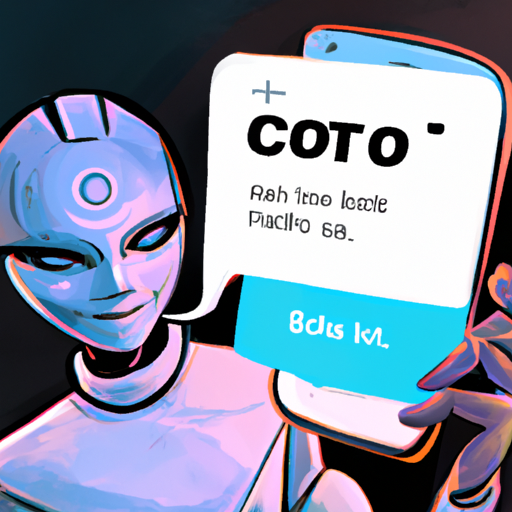
Personalizing user interactions is an essential aspect of creating a memorable and engaging experience for users, and incorporating GPT chat prompts can take it to the next level. By tailoring conversations to individual users, businesses can make customers feel valued, better understand their needs, and establish stronger connections. Here are some ways GPT chat prompts can be used to personalize user interactions:
1. Addressing users by name: Including a user’s name in a chat prompt helps create a sense of familiarity and makes the conversation feel more genuine. This simple gesture can significantly impact user engagement and satisfaction.
2. Understanding user preferences: GPT models can be trained to identify and remember user preferences, such as favorite products, styles, or interests. By incorporating this information into chat prompts, businesses can provide personalized recommendations and ensure that conversations are relevant to the user.
3. Providing tailored support: GPT chat prompts can be customized to offer support based on a user’s specific needs or issues. By addressing their concerns directly, businesses can demonstrate their commitment to providing exceptional customer service.
4. Adapting to the user’s communication style: GPT models can be trained to identify and adapt to a user’s preferred communication style, whether it’s formal, casual, or somewhere in between. This allows businesses to communicate with users in a way that feels natural and comfortable for them.
5. Celebrating milestones and achievements: GPT chat prompts can be used to congratulate users on personal or professional milestones, such as birthdays, anniversaries, or accomplishments. This helps build a more personal connection and shows that businesses are genuinely invested in their users’ lives.
6. Offering personalized incentives: By gathering data on user behavior and preferences, GPT chat prompts can be used to offer personalized incentives, such as discounts or promotions tailored to their interests. This can encourage users to engage with the brand and make purchases.
7. Customizing content recommendations: By analyzing user preferences and behavior, GPT chat prompts can provide content recommendations that are highly relevant to the individual user. This can include articles, blog posts, videos, or other media that align with their interests, making the user experience more enjoyable and engaging.
8. Learning from past interactions: GPT chat prompts can be designed to remember and learn from past interactions with users. This allows the AI to better understand the user’s needs and preferences, leading to more personalized and accurate responses over time.
In conclusion, personalizing user interactions with GPT chat prompts is an effective way to enhance customer experiences, drive engagement, and foster loyalty. By understanding and addressing the unique needs and preferences of each user, businesses can create more meaningful connections and deliver a truly personalized experience.
9. Improving Customer Retention through GPT Chatbots
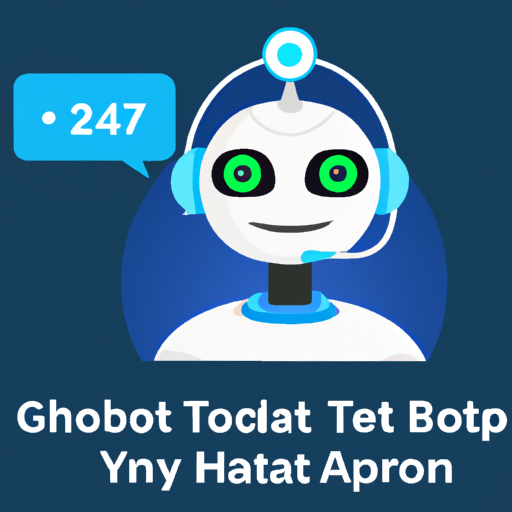
Customer retention is a crucial aspect of business growth and sustainability, as acquiring new customers can be several times more costly than retaining existing ones. One of the most effective ways to improve customer retention is by enhancing customer service and support. In recent years, GPT (Generative Pre-trained Transformer) chatbots have emerged as a powerful tool in delivering superior customer experiences and driving customer loyalty.
GPT chatbots leverage artificial intelligence and natural language processing to understand and respond to user queries in a conversational and human-like manner. By integrating GPT chatbots into your customer support strategy, you can achieve significant improvements in customer retention through the following ways:
1. Quick and Efficient Responses: GPT chatbots can handle a large number of customer queries simultaneously and provide instant responses. This helps reduce customer wait times and enhances satisfaction levels, leading to increased loyalty and retention.
2. Personalized Conversations: GPT chatbots have the ability to analyze customer data, preferences, and previous interactions to provide tailored responses and recommendations. This personalized approach makes customers feel valued and understood, fostering long-term relationships.
3. 24/7 Availability: GPT chatbots are always available to attend to customers, ensuring that their queries and concerns are addressed at any time of the day or night. This around-the-clock support boosts customer satisfaction and loyalty.
4. Proactive Support: GPT chatbots can proactively engage with customers, offering assistance, tips, and recommendations before customers even ask for help. This proactive approach demonstrates a commitment to customer success and can lead to increased retention rates.
5. Consistent Service Quality: GPT chatbots follow predefined guidelines and protocols, ensuring that customers receive consistent and high-quality support. This reliability helps build trust and loyalty among customers, ultimately improving retention.
6. Streamlined Escalation: GPT chatbots can intelligently route complex or sensitive queries to human agents, ensuring that customers receive the appropriate level of support. This seamless escalation process ensures customer satisfaction and confidence in the support system.
7. Collecting Feedback: GPT chatbots can gather valuable customer feedback and insights, which can be utilized to improve products, services, and support processes. By addressing customer pain points and continually enhancing the customer experience, businesses can increase customer retention rates.
8. Cost-effective Solution: GPT chatbots can significantly reduce customer support costs by automating repetitive tasks and handling a large volume of queries. By reallocating resources to other strategic areas, businesses can enhance overall customer experiences, leading to increased loyalty and retention.
In conclusion, integrating GPT chatbots into your customer support strategy can deliver numerous benefits that contribute to improved customer retention. By providing quick, personalized, and consistent support, GPT chatbots can enhance customer satisfaction and loyalty, driving long-term business success.
10. AI Ethics and GPT Chatbots: Ensuring Responsible Use
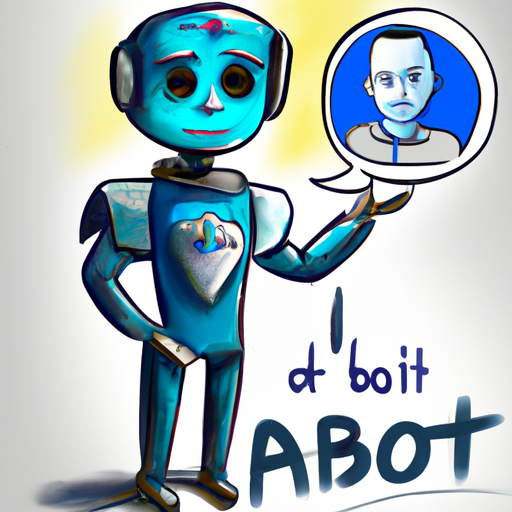
AI Ethics and GPT Chatbots: Ensuring Responsible Use
The rapid advancements in AI and natural language processing have led to the creation of increasingly sophisticated chatbots like GPT-3. These chatbots can engage in fluent and coherent conversations with users, making them highly beneficial for various applications, from virtual assistants and customer support to content creation and language translation. However, with great power comes great responsibility. It is crucial to address the ethical implications of using GPT chatbots and ensure that they are used responsibly.
One of the primary concerns surrounding GPT chatbots is the potential for perpetuating bias and misinformation. AI models learn from vast amounts of data present on the internet, and this data often includes biased, offensive, or misleading information. As a result, GPT chatbots might inadvertently produce inappropriate or harmful responses. To mitigate this issue, developers should invest in refining these models, providing unbiased training data, and implementing robust review systems. Additionally, users should be aware of the chatbot’s limitations and treat the information provided with a healthy dose of skepticism.
Another ethical concern is the potential for GPT chatbots to be used in spreading disinformation or facilitating malicious activities, such as cyberbullying or online harassment. Developers and platform providers should establish strict guidelines and policies to prevent misuse. This can include implementing safety measures like content moderation, user authentication, and reporting systems, as well as fostering a culture of accountability and transparency.
Privacy is also a major concern, as chatbots may inadvertently collect, store, or expose sensitive user data. Developers should prioritize privacy by design, incorporating data protection measures throughout the development process. This includes anonymizing data, implementing encryption, and informing users about data collection practices and potential risks. Users should also be made aware of the extent to which their data is stored and used by the chatbot, and they should have the option to opt-out of data collection or delete their data upon request.
As GPT chatbots become more integrated into our daily lives, it is essential to consider the impact on human labor. While AI-powered chatbots can automate tasks and improve efficiency, they may also contribute to job displacement in industries such as customer service and content creation. It is crucial for organizations to consider the potential social implications and explore ways to upskill and reskill employees, ensuring that human workers can adapt and remain competitive in the changing landscape.
Finally, fostering a culture of collaboration and dialogue between AI developers, policymakers, and the public is essential for navigating the ethical challenges posed by GPT chatbots. Developing a common understanding and shared values can help in setting guidelines and regulations that promote the responsible use of AI technologies.
In conclusion, GPT chatbots offer immense potential for improving various aspects of our lives, but their widespread use also comes with ethical challenges that must be addressed. By investing in unbiased AI models, implementing safety measures, protecting user privacy, considering the impact on human labor, and fostering a collaborative approach, we can ensure that GPT chatbots are used responsibly and contribute positively to our society.
11. Natural Language Processing and GPT Chat Prompts
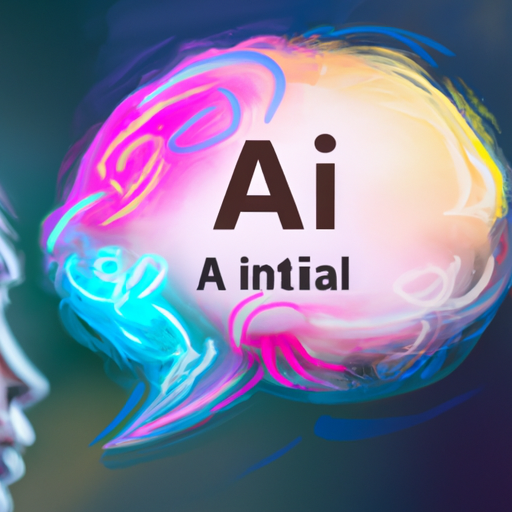
Natural Language Processing and GPT Chat Prompts
Natural Language Processing (NLP) is a subfield of artificial intelligence (AI) that focuses on enabling computers to understand, interpret, and generate human language. It combines computational linguistics, machine learning, and cognitive science to develop algorithms and models that can process and analyze vast amounts of textual data. One of the most significant advancements in NLP in recent years is the development of the Generative Pre-trained Transformer (GPT) models, which have revolutionized the way AI interacts with humans through chat prompts.
GPT models, such as OpenAI’s GPT-3, are pre-trained on a large corpus of text, enabling them to generate contextually relevant, coherent, and human-like responses to chat prompts. These models are particularly skilled at understanding the nuances of natural language, making them an excellent choice for chat-based applications, such as virtual assistants, customer support, and content generation.
When it comes to GPT chat prompts, the quality of the prompt plays a crucial role in determining the usefulness and relevance of the generated response. A well-crafted chat prompt not only captures the essence of the user’s query but also provides enough context for the GPT model to generate an appropriate response. Here are some factors to consider when designing the best GPT chat prompts:
1. Clarity: Ensure that the chat prompt is clear and concise, with a specific focus on the information or action the user is seeking.
2. Context: Provide sufficient context for the GPT model to understand the query accurately. This may include relevant background information, user preferences, or any specific constraints that apply to the query.
3. Structure: Use proper sentence structure and grammar to ensure that the GPT model can easily parse the chat prompt and generate a coherent response.
4. Relevance: Tailor the chat prompt to the user’s needs and interests, ensuring that it addresses their specific concerns or objectives.
5. Adaptability: Design chat prompts that can cater to a wide range of user queries, allowing the GPT model to generate personalized and contextually relevant responses.
By carefully crafting chat prompts that adhere to these principles, developers can harness the full power of GPT models to create engaging, human-like interactions in various applications. As NLP technology continues to evolve, GPT chat prompts will play an increasingly vital role in bridging the gap between AI and human communication, enhancing user experiences across a multitude of industries.
12. GPT Chatbots for Mental Health and Emotional Support
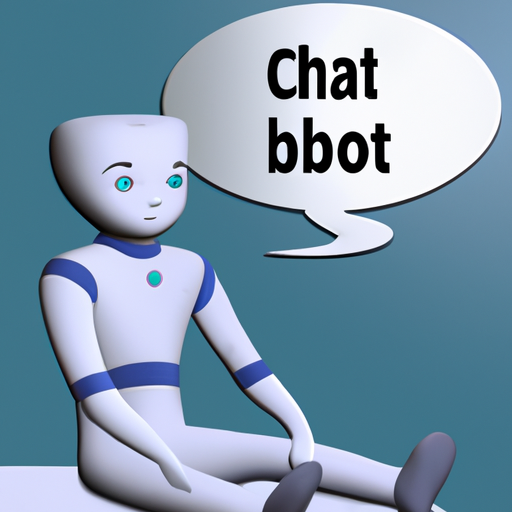
GPT chatbots for mental health and emotional support have become increasingly popular in recent years, providing a unique and innovative approach to addressing the growing need for mental health services. These AI-powered chatbots leverage the capabilities of advanced natural language processing and understanding, offering users real-time support and guidance in managing their emotional well-being.
One of the main advantages of using GPT chatbots for mental health support is their accessibility. With mental health services often being expensive or difficult to access, chatbots offer an alternative solution that can be reached anytime, anywhere, and by anyone with an internet connection. This democratization of mental health support is particularly important for individuals who may be hesitant to seek help from traditional sources, such as therapy or counseling.
Another benefit of GPT chatbots is their ability to offer personalized support. By analyzing the user’s text inputs, these chatbots can provide tailored responses based on the individual’s needs and emotional state. This customized approach ensures that users receive the most relevant and helpful guidance for their specific situation, fostering a sense of understanding and empathy.
GPT chatbots can also serve as an effective tool for self-reflection and self-awareness. By engaging in a conversation with a chatbot, users are encouraged to express their thoughts and feelings, which can help them better understand their own emotions and mental state. This process of self-exploration can lead to increased emotional intelligence and personal growth.
It is important to note, however, that GPT chatbots are not a replacement for professional mental health services. While they can offer valuable support and guidance, they should be seen as a supplementary resource rather than a standalone solution. For individuals experiencing severe mental health issues or those in need of specialized care, it is crucial to seek help from a qualified mental health professional.
Despite their limitations, GPT chatbots for mental health and emotional support hold great promise in enhancing the availability and accessibility of mental health resources. By providing personalized, empathetic, and convenient support, these AI-driven chatbots have the potential to make a significant impact on the lives of individuals struggling with emotional and psychological challenges. As technology continues to advance, we can expect to see even more sophisticated and effective chatbots, further revolutionizing the way we approach mental health care.
13. The Science Behind GPT-Powered Chatbots
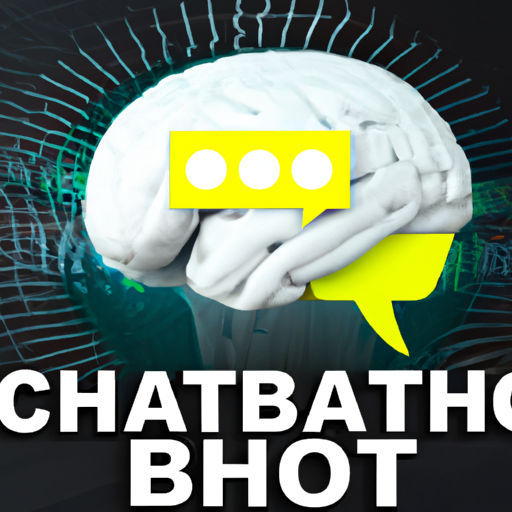
The Science Behind GPT-Powered Chatbots
Generative Pre-trained Transformers (GPT), developed by OpenAI, have revolutionized the field of natural language understanding and processing. GPT-powered chatbots have emerged as an innovative and efficient way to engage users in human-like conversation. To appreciate the ingenuity of GPT-powered chatbots, it is essential to delve into the science and technology behind them.
At the core of GPT-powered chatbots lies the concept of transformers, which are a type of neural network architecture designed specifically for handling sequential data and natural language processing tasks. Transformers were introduced in the groundbreaking paper "Attention is All You Need" by Vaswani et al. in 2017. They employ a mechanism called self-attention, which allows the model to weigh the importance of different words within a given context, making it more capable of understanding complex language patterns.
GPT, being a generative model, is pre-trained on a massive corpus of text data. This pre-training phase involves unsupervised learning, where the model learns to predict the next word in a sentence by analyzing the probability distribution of words within the context. The more diverse and extensive the training data, the better the model becomes at understanding various language nuances, idioms, and even specific domain knowledge.
Once the pre-training is complete, the model is fine-tuned for specific tasks, such as creating chatbots, by training it on targeted datasets. The fine-tuning process involves supervised learning, where the model learns to generate contextually relevant responses based on the input received.
GPT-powered chatbots are capable of providing human-like responses due to their ability to generate text that is not only contextually accurate but also coherent and engaging. This is achieved through a technique called beam search, which allows the model to explore multiple potential responses before settling on the one with the highest probability of being contextually appropriate and coherent.
Another crucial aspect of the science behind GPT-powered chatbots is their ability to adapt and learn from user interactions. Over time, the chatbot can become more skilled at providing personalized and relevant responses, effectively enhancing its utility and user experience.
In conclusion, the science behind GPT-powered chatbots is rooted in the power of transformers, the efficiency of pre-training and fine-tuning, and the ability to generate coherent and contextually accurate text. These advancements in natural language processing have paved the way for creating chatbots that can engage users in meaningful and human-like interactions, making them an invaluable tool in various applications, from customer service to personal assistants and beyond.
14. Best Practices for Implementing GPT Chatbots in Your Business
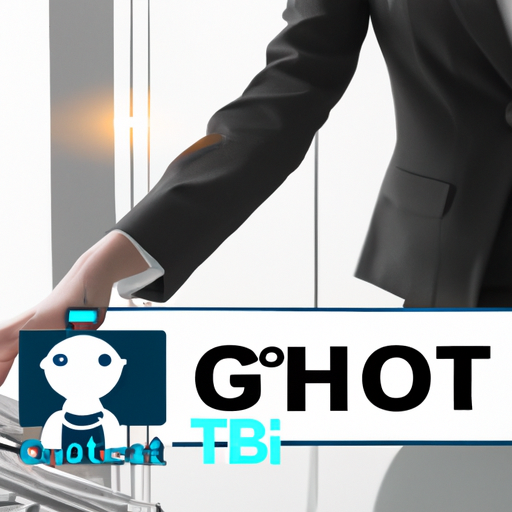
Integrating GPT chatbots in your business can streamline customer support, marketing, sales, and other operational tasks, leading to increased productivity and improved customer satisfaction. To make the most of these capabilities, it is essential to follow best practices when implementing GPT chatbots. Here are some guidelines to help you optimize their use in your organization:
1. Define clear objectives: Before implementing a GPT chatbot, outline the specific goals you want to achieve. This could include improving customer service response times, generating leads, or providing personalized recommendations. Having clear objectives will help you measure the success of the chatbot and fine-tune its performance.
2. Choose the right platform: When selecting a GPT chatbot platform, consider factors such as ease of integration, scalability, and customization options. Ensure that it can seamlessly integrate with your existing systems and can be easily adapted to meet your business requirements.
3. Prioritize user experience: Focus on designing a chatbot that is easy to use and understand. This includes creating simple and intuitive conversational flows, using natural language, and offering appropriate response options. A well-designed user interface can have a significant impact on user satisfaction and engagement.
4. Train and customize the chatbot: GPT chatbots can be fine-tuned to understand the specific needs and requirements of your business. Invest time in training the chatbot to comprehend industry-specific terminology, your products and services, and the unique attributes of your target audience.
5. Test and improve: Continuously test your chatbot’s performance, gather user feedback, and make improvements accordingly. Analyze its accuracy, response time, and user satisfaction to identify areas for enhancement. Regular testing ensures that the chatbot remains relevant and provides value to your customers.
6. Maintain transparency: Make it clear to users that they are interacting with a chatbot and not a human agent. This helps set realistic expectations and prevents potential frustration. You can also provide an option for users to be transferred to a human agent if they require assistance beyond the chatbot’s capabilities.
7. Ensure data security and privacy: GPT chatbots collect sensitive user information, so it’s crucial to implement strict data security measures. Regularly update your chatbot’s security protocols and adhere to data protection regulations, such as GDPR, to maintain user trust and avoid legal complications.
8. Monitor performance and usage metrics: Keep track of key performance indicators (KPIs) such as the number of users, conversation length, user satisfaction, and conversion rates. These metrics can help you understand the chatbot’s effectiveness and make data-driven decisions to optimize its performance.
9. Promote your chatbot: To maximize the benefits of your GPT chatbot, ensure that your target audience is aware of its existence. Leverage various marketing channels to inform users about the chatbot and its capabilities.
10. Stay updated with advancements: GPT chatbot technology is continuously evolving. Stay informed about the latest developments and upgrades to ensure that your chatbot remains competitive and up-to-date.
By following these best practices, you can effectively implement GPT chatbots in your business and leverage their potential to enhance customer experience, streamline operations, and achieve your business objectives.
15. GPT Chatbots in Education: Promoting Interactive Learning
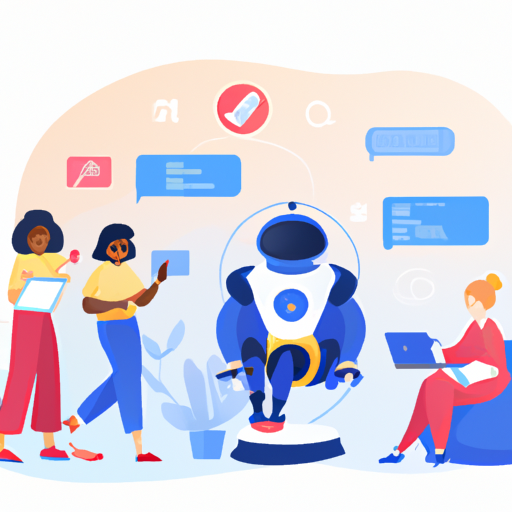
GPT chatbots have taken the world by storm, revolutionizing various aspects of daily life, including education. These AI-powered tools promote interactive learning, which not only makes education more engaging but also enhances the learning experience for students. In this section, we’ll explore the benefits of GPT chatbots in education and how these tools can be used to bolster interactive learning.
1. Personalized Learning: One of the key advantages of GPT chatbots in education is their ability to provide personalized learning experiences. By analyzing a student’s learning style, strengths, and weaknesses, chatbots can offer tailored content and guidance. This allows students to learn at their own pace and focus on areas where they need improvement.
2. Instant Feedback: GPT chatbots can provide real-time feedback to students, allowing them to quickly identify and correct mistakes. This instant feedback loop helps solidify learning and improves retention of knowledge.
3. Engaging Conversations: GPT chatbots are designed to mimic human conversations, making them more engaging and relatable for students. This conversational approach can help break down complex concepts and encourage students to ask more questions and explore topics in depth.
4. Accessible Learning: GPT chatbots can be accessed via various devices, such as smartphones, tablets, and laptops, providing students with a flexible and convenient learning experience. This accessibility ensures that students can engage with educational material anytime and anywhere.
5. Collaboration and Peer Learning: GPT chatbots can facilitate collaboration and peer learning by connecting students with similar interests and learning styles. This interaction encourages students to learn from one another, fostering a sense of community and promoting a collaborative learning environment.
6. Support for Educators: GPT chatbots can also serve as valuable tools for educators, assisting with tasks such as grading, content curation, and answering student queries. By automating these tasks, teachers can focus on more critical aspects of their job, such as designing effective lesson plans and providing personalized support to students.
7. Continuous Learning and Improvement: GPT chatbots can learn from their interactions with students and educators, enabling them to improve their performance over time. This continuous learning ensures that the chatbot stays updated with current trends and best practices in education, providing students with the most relevant and effective learning experiences.
In conclusion, GPT chatbots hold immense potential in the field of education. By promoting interactive learning through personalized content, real-time feedback, and engaging conversations, these tools can significantly enhance the educational experience for both students and educators. As AI technology continues to advance, we can expect to see even more sophisticated and effective chatbots emerging, further transforming the landscape of education.
16. The Impact of GPT Chatbots on Customer Satisfaction
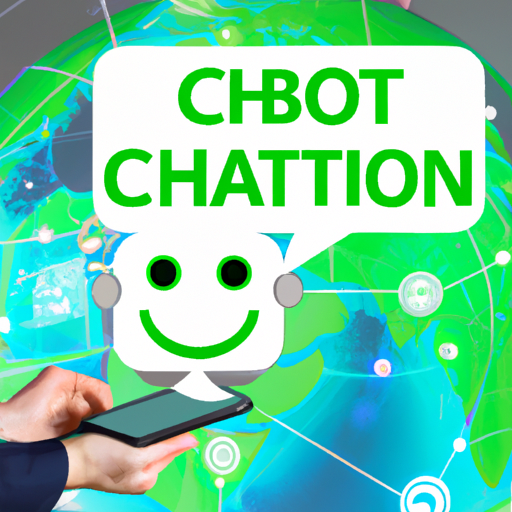
The emergence of GPT chatbots has significantly impacted customer satisfaction in various industries. These chatbots, powered by advanced language models like OpenAI’s GPT-3, offer more accurate, efficient, and human-like conversational experiences, enabling businesses to enhance their customer support, engagement, and overall satisfaction.
Customer satisfaction is crucial for any business, as it directly influences brand loyalty, customer retention, and long-term success. GPT chatbots have the potential to improve customer satisfaction in several ways:
1. Faster response times: GPT chatbots can handle multiple conversations simultaneously and provide instant responses. This allows customers to receive prompt assistance and reduces the frustration associated with waiting for a response from a human agent.
2. 24/7 availability: GPT chatbots are always available, ensuring that customers can seek help or information at any time, even outside of regular business hours. This round-the-clock support is particularly beneficial for businesses with an international clientele, as customers can receive assistance in their time zone.
3. Personalized interactions: GPT chatbots can analyze a user’s conversation history and preferences to provide personalized recommendations, offers, or information. This level of personalization can enhance customer satisfaction and contribute to a more tailored and engaging experience.
4. Improved accuracy: GPT-3’s advanced language understanding capabilities allow chatbots to understand complex queries and provide more accurate responses. This can help resolve customer issues more effectively, leading to higher satisfaction rates.
5. Multilingual support: GPT chatbots can communicate in multiple languages, enabling businesses to cater to a diverse customer base. This can be particularly beneficial for global businesses, as customers can receive support in their native language, leading to better understanding and satisfaction.
6. Reduced wait times: By handling routine queries and tasks, GPT chatbots can free up human agents to focus on more complex issues. This can result in reduced wait times for customers who require assistance from human agents, further improving satisfaction levels.
7. Consistent quality: GPT chatbots can maintain a consistent level of quality in their interactions, regardless of the volume of queries they receive. This ensures that customers receive the same high level of support, even during peak times or periods of high demand.
In conclusion, GPT chatbots have the potential to significantly improve customer satisfaction levels by offering faster, more accurate, and personalized support. As these technologies continue to evolve, businesses should consider implementing GPT chatbots in their customer service strategies to stay competitive and enhance the overall customer experience.
17. Real-Life Success Stories of GPT-Powered Chatbots
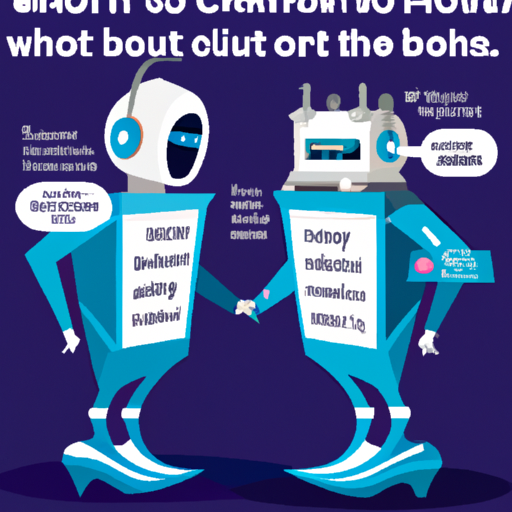
Real-Life Success Stories of GPT-Powered Chatbots
The rapid advancements in AI and natural language processing have led to the development of increasingly sophisticated chatbots. GPT-powered chatbots, in particular, have demonstrated impressive success in various industries and applications. Here are some real-life success stories of GPT-powered chatbots that showcase their potential and impact:
1. Replika: Replika is a personal AI friend designed to learn from and adapt to the user’s personality, needs, and preferences. Powered by GPT-3, Replika can engage in deep and meaningful conversations with users, providing emotional support and companionship. Many users have reported experiencing improvements in their mental health and well-being, thanks to the empathetic and understanding nature of the chatbot.
2. Kuki (formerly Mitsuku): Kuki is a GPT-3 powered chatbot that has won multiple awards, including the Loebner Prize, for its ability to engage in human-like conversations. Kuki is used in various applications, including customer support, gaming, and virtual assistants. Its success lies in its ability to understand context, provide relevant responses, and engage users in an interactive and entertaining manner.
3. OpenAI’s ChatGPT: OpenAI’s ChatGPT is a language model that has been fine-tuned for conversational AI applications. It has demonstrated impressive success in various applications, including drafting emails, answering questions, creating conversational agents, tutoring, language translation, and even simulating characters for video games. ChatGPT’s versatility and ability to generate coherent and contextually relevant responses have made it an essential tool for developers and businesses alike.
4. GPT-3 Creative Writing Assistant: GPT-3 has been used to develop creative writing assistants that help authors, scriptwriters, and content creators generate ideas, draft content, and fine-tune their work. These chatbots can understand context, follow instructions, and generate high-quality text that closely resembles human-generated content. Many authors and writers have reported increased productivity and creative output using GPT-3 powered writing assistants.
5. GPT-3 in Customer Service: Many businesses have adopted GPT-3 powered chatbots to enhance their customer service operations. These chatbots can handle a variety of tasks, such as answering frequently asked questions, resolving issues, and guiding customers through various processes. By automating these tasks, businesses can provide faster and more efficient support, leading to higher customer satisfaction levels.
These success stories highlight the immense potential of GPT-powered chatbots in enhancing various aspects of our lives, from personal well-being to professional productivity. As AI technology continues to evolve, we can expect even more remarkable achievements in the field of conversational AI and chatbot development.
18. Leveraging GPT Chatbots for Social Media Engagement
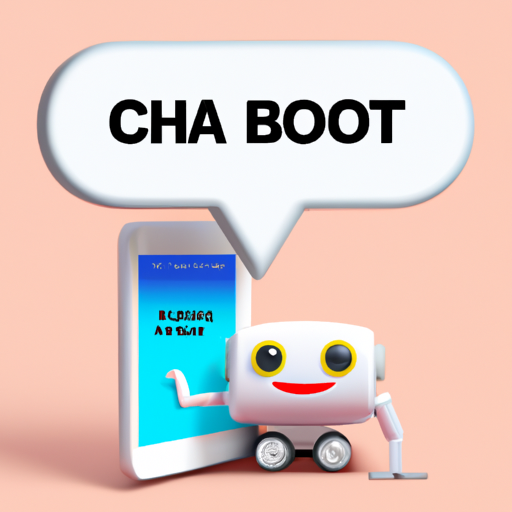
Leveraging GPT Chatbots for Social Media Engagement
In today’s digital landscape, social media engagement has become a vital aspect of brand success. Businesses and organizations are constantly seeking ways to increase their presence and interact with their audience on different social media platforms. One of the most effective ways to achieve this is by leveraging GPT chatbots for social media engagement.
GPT chatbots, or Generative Pre-trained Transformers, are advanced AI models that can understand and generate human-like text. These chatbots have the potential to revolutionize social media engagement by providing personalized, interactive, and prompt responses to user queries and comments.
Here are some ways in which GPT chatbots can be utilized to enhance social media engagement:
1. Improved Customer Service: GPT chatbots can be programmed to respond to customer queries and concerns on social media platforms, providing instant resolutions and saving time for both the customers and the support teams. This not only improves customer satisfaction but also helps build a positive brand image.
2. Increased Engagement: By using GPT chatbots to respond to comments and messages on social media, businesses can ensure that their audience receives prompt responses and feels heard. This increases the chances of users engaging with the brand more frequently, leading to higher visibility and reach.
3. Personalized Experience: GPT chatbots can be tailored to provide personalized responses based on the user’s preferences, previous interactions, and other relevant data. This creates a more engaging experience for the user, making them feel valued and encouraging them to interact with the brand more often.
4. Content Generation: GPT chatbots can be used to generate relevant and engaging content for social media posts. This helps businesses maintain a consistent presence on social media and keep their audience engaged with fresh and interesting content.
5. Trend Analysis: GPT chatbots can analyze social media trends and help businesses identify popular topics, hashtags, and discussions. This enables businesses to participate in these conversations and maintain relevance in the ever-changing social media landscape.
6. Social Listening: GPT chatbots can monitor social media platforms for mentions of the brand or relevant keywords, allowing businesses to track their online reputation and address any issues or concerns promptly.
7. 24/7 Availability: GPT chatbots can operate around the clock, ensuring that customers and users receive assistance and engagement at any time, regardless of time zones or the availability of human staff.
In conclusion, leveraging GPT chatbots for social media engagement can significantly enhance the user experience and help businesses connect with their audience in a more meaningful and effective manner. By embracing this technology, businesses can stay ahead of the curve, maintain a strong online presence, and drive long-term growth and success.
19. Multilingual GPT Chatbots: Bridging Language Barriers
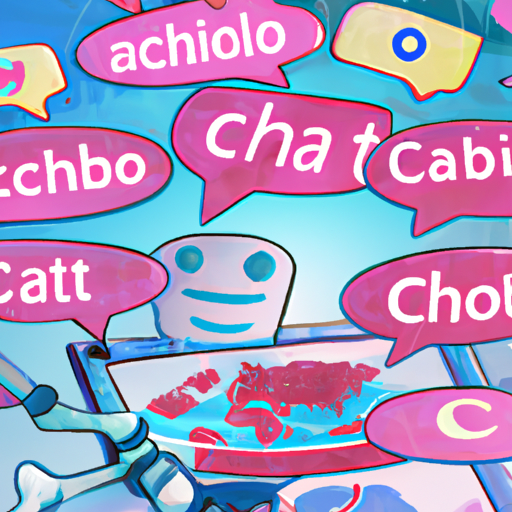
Multilingual GPT Chatbots: Bridging Language Barriers
In today’s globalized world, language barriers often hinder effective communication, limiting opportunities for businesses, education, and personal growth. With recent advancements in language models, multilingual GPT chatbots have emerged as a powerful tool to break down these barriers, enabling seamless communication between people who speak different languages. These AI-powered chatbots support multiple languages, offering a promising solution to bridge language gaps and foster mutual understanding.
One of the most significant advantages of multilingual GPT chatbots is their ability to understand and generate text in various languages, with some models even capable of translating between them. This functionality allows users to interact with the chatbot using their native language, making it more accessible and user-friendly. Additionally, the chatbot can serve as a real-time translator between two or more users who speak different languages, facilitating smooth communication without the need for human translators.
Another notable benefit of these chatbots is their capacity to learn and understand the cultural nuances and idiomatic expressions unique to each language. This understanding enables the chatbot to generate responses that are not only linguistically accurate but also culturally appropriate, ensuring a more authentic and engaging interaction for users. As a result, these chatbots can be used to teach language learners about the cultural aspects of the language they are studying, providing them with a more comprehensive learning experience.
Moreover, the use of multilingual GPT chatbots can significantly improve customer support services for businesses with a global customer base. By integrating these chatbots into their customer support systems, companies can offer instant assistance in multiple languages, addressing customer concerns and inquiries more efficiently. This not only improves customer satisfaction but also reduces the strain on human support agents, allowing them to focus on more complex issues that require human intervention.
Furthermore, these chatbots can be customized and tailored to specific industries and applications, such as tourism, healthcare, and education. For instance, a multilingual chatbot can assist travelers in navigating foreign countries by providing information in their native language, while a healthcare chatbot can communicate with patients who speak different languages, enabling more accurate diagnosis and treatment.
In conclusion, multilingual GPT chatbots hold immense potential in bridging language barriers and enhancing communication across various fields. As AI technology continues to evolve, these chatbots are expected to become even more sophisticated and accurate, paving the way for a future where language differences no longer hinder global interactions and collaboration.
20. Conclusion: The Future of Chat GPT Prompts and Their Potential Impact
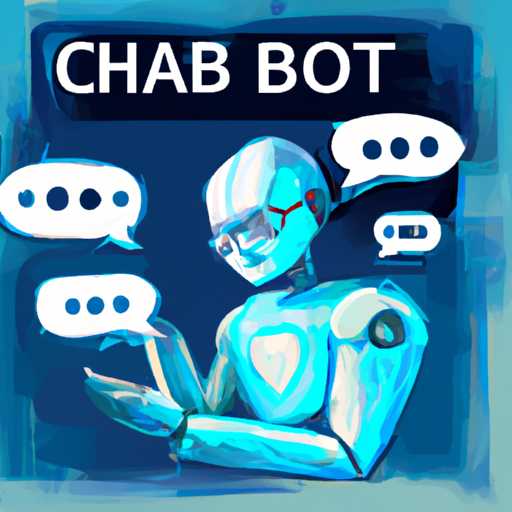
In conclusion, the rapid advancements in AI and Natural Language Processing technologies have led to the development of increasingly sophisticated chat GPT prompts. These prompts are revolutionizing the way we communicate and interact with machines, opening up a world of possibilities in various industries and applications. As chat GPT prompts continue to improve, we can only begin to imagine the potential impact they may have on the future.
One of the most significant areas where chat GPT prompts can make a difference is in customer support services. By integrating these AI-driven chatbots into companies’ customer service platforms, businesses can provide instant, personalized, and efficient assistance to their clients, reducing wait times and improving overall customer satisfaction. This not only drives positive brand perception but also helps save costs associated with hiring human support representatives.
Additionally, chat GPT prompts have the potential to revolutionize education and online learning platforms. By employing AI-powered chatbots as virtual tutors, students can receive instant feedback and explanations for their queries, making the learning process more interactive and engaging. This can lead to better comprehension and retention of knowledge, bridging the gaps in traditional educational systems.
In the healthcare sector, chat GPT prompts can be employed as virtual health assistants, guiding patients through their treatment plans, monitoring their progress, and answering questions related to their conditions. This can lead to improved patient adherence to treatment regimens and reduced strain on healthcare professionals, allowing them to focus on more critical cases.
Moreover, the creative industries can benefit from the integration of chat GPT prompts, as AI-powered tools can assist in content generation, brainstorming ideas, and even writing scripts or stories. This can lead to innovative collaborations between human and AI creators, pushing the boundaries of art and entertainment.
Despite the many potential benefits of chat GPT prompts, it is also essential to address the ethical concerns and challenges associated with AI-driven technologies. Issues such as data privacy, biases in AI algorithms, and the potential loss of human jobs must be considered and mitigated to ensure that these powerful tools are used responsibly and for the greater good.
In summary, chat GPT prompts are poised to disrupt and transform various industries, enhancing human-machine interactions and paving the way for a more efficient and interconnected future. As we continue to develop and refine these AI-driven technologies, it is crucial that we remain mindful of their potential impact on society and work to harness their capabilities responsibly and ethically.
In conclusion, GPT-powered chatbots are undoubtedly revolutionizing the way businesses communicate with their customers. By leveraging the power of natural language processing and the latest advancements in conversational AI, GPT chatbots provide a more personalized, interactive, and efficient user experience across various industries. From customer service and sales to education and mental health support, the potential applications of GPT chatbots are vast and impressive.
As more organizations continue to adopt GPT-powered chatbots, it is crucial to ensure responsible use while considering AI ethics and privacy concerns. Businesses must also strive to create effective and engaging chat prompts that cater to the unique needs of their audience. As we move into the future, we can expect GPT chatbots to play an even more significant role in shaping the way we communicate, learn, and interact with one another in the digital space.
In short, the future of chat GPT prompts looks promising, and their potential impact is immense. By harnessing the power of GPT technology, businesses can improve customer satisfaction, increase retention, and promote a more engaging and personalized online experience. It is essential for organizations to stay abreast of these technological advancements and strategically incorporate GPT-powered chatbots into their operations to stay ahead of the competition and provide the best possible customer experience.

